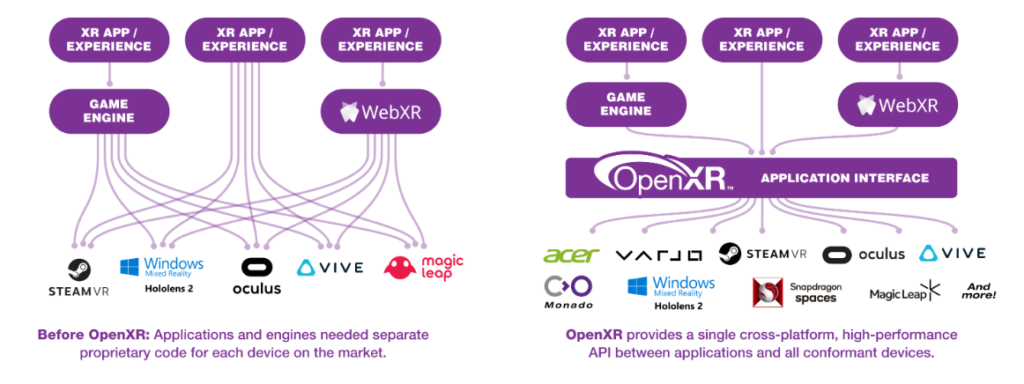Author: Spindox Labs
Extended Reality (XR) is supported by a multitude of platforms, ranging from mobile devices and desktops to virtual reality (VR) and augmented reality (AR) headsets. However, this diversity of platforms poses a significant challenge for developers. They must navigate multiple development environments, languages, and tools to create XR applications that work seamlessly across all platforms. Fortunately, multiplatform XR development tools have emerged to ease this burden.
Multiplatform XR development tools provide developers with a common framework for building XR applications across multiple platforms. These tools enable developers to write code once and deploy it across various devices, reducing development time and costs while ensuring consistent user experiences across devices. Some of the most popular multiplatform XR development tools include Unity, Unreal Engine, and Vuforia.
Unity is a popular development platform for building 2D, 3D, and XR applications. Unity allows developers to create content for various platforms, including iOS, Android, Windows, and macOS, as well as VR and AR devices. With Unity, developers can write code in C# and deploy it across multiple devices, making it a popular choice for XR development.
Unreal Engine is another widely used multiplatform development tool. Developed by Epic Games, Unreal Engine is a powerful engine for building high-quality, immersive XR experiences. It supports a variety of platforms, including mobile devices, desktops, consoles, and VR and AR devices. Unreal Engine also provides developers with a visual scripting language, making it an accessible option for those who prefer a more visual approach to development.
Vuforia is a popular AR development tool that allows developers to create AR applications for various platforms, including iOS, Android, and HoloLens. Vuforia provides developers with tools for image recognition, tracking, and rendering, enabling them to create AR experiences that integrate seamlessly with the physical world.
While these multiplatform XR development tools have simplified development across various devices, they still suffer from fragmentation. Each platform has its APIs (Application Programme Interfaces), rendering engines, and hardware requirements, making it challenging to create applications that work seamlessly across all devices.

Source: https://www.khronos.org/openxr
OpenXR, developed by Khronos Group, a consortium of leading technology companies, including Microsoft, Oculus, and Epic Games, among others, is an open, royalty-free standard for XR application development, that aims to simplify XR development by providing a common API that works across various platforms and devices, enabling developers to create XR applications that run smoothly across all platforms. This platform provides a unified API that abstracts the differences between various XR platforms, allowing developers to create applications that work seamlessly across different devices. This standard enables developers to write code once and deploy it across multiple platforms, reducing development time and costs while ensuring consistent user experiences across devices.
In conclusion, multiplatform XR development tools have revolutionized the XR development landscape by enabling developers to create content for various devices. However, these tools suffer from fragmentation, making it challenging to create applications that work seamlessly across all platforms. The OpenXR platform addresses this fragmentation by providing a unified standard for XR application development, enabling developers to create XR applications that work seamlessly across various devices. As XR continues to evolve, OpenXR will play a critical role in simplifying development and accelerating the growth of XR applications. OpenXR 1.0 was released to the public by Khronos Group at SIGGRAPH 2019

